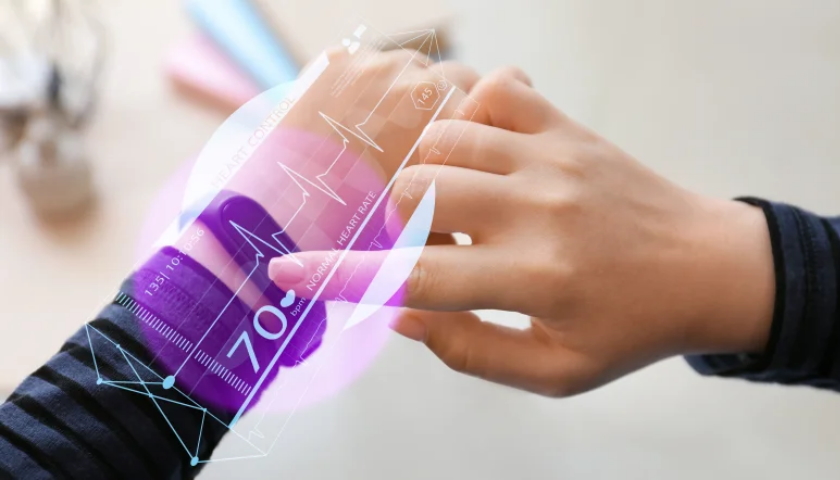The impact of COVID-19 has had a profound impact on the healthcare industry. It created an influx of technology adoptions and developments. This connected industry players, provided deeper health insights and allowed for the anticipation of medical needs. As exponential innovation continues to drive medical professionals, digital leaders in healthcare are looking at emerging technologies and solutions to transform the system in 2023 and beyond. Let’s look at which trends will be prominent in the near future.
Ambient Intelligence
A new AI paradigm is rising in the healthcare sector. It is powered by IoT sensors to monitor patients and is called Ambient Intelligence or AmI. It considers devices, sensors, people and activities within a space to offer assistance in every situation. Both reactive and proactive, AmI responds to customer-initiated requests and anticipates patient needs through AI-initiated analytics before fading into the background.
When implemented in hospitals, AmI monitors patient health conditions to predict and prevent serious health issues as well as speed up recovery time during postoperative care. In nursing homes, AmI allows the elderly to maintain more independent lifestyles through home automation, continuous monitoring and automated real-time assistance. For example, AmI reminds the elderly to take their medicine or alert medical professionals of changes in activities, which may indicate health decline.
Medical AI
AI and machine learning are making waves in multiple sectors and will continue to be popular solutions in the healthcare industry. Its deep learning, natural language processing and advanced analytics enhance patient care, automate administrative tasks and keep tabs on minute details impossible for the human eye to detect.
In the future, sophisticated AI will be used to accelerate clinical testing and drug discovery, minimize negative side effects, and decrease the prevalence and fatality of infectious diseases. Predictive analytics will drive preventive medicine, allowing healthcare experts to discover possible health risks and adjust the level of care to prevent it from happening. AI-driven imaging technologies, for instance, can analyze CT, MRI and ultrasound scans to detect preventable causes of death and provide patients with better health insights.
Internet of Medical Things
The Internet of Medical Things (IoMT), or IoT in healthcare, brings together the digital realm and physical world to enable the creation of new digital health products. These interconnected networks of devices allow medical professionals to monitor patient health, track medication, manage symptoms and derive real-time insights. One use case includes on-body IoMT where wearable devices and body sensor clothing track movement, heart rate and blood sugar levels.
This opens the door to new data never processed before for patients to further understand their health and for doctors to make informed decisions. Sensor technology empowers telemedicine by allowing healthcare practitioners to remotely examine patients using smart medical devices and transmit test results for analysis. Robotics can be used to bring specialty care to people with limited mobility or those living in rural communities.
Symptom-Checker Virtual Assistants
While using live chat on a website, there’s always the sneaking suspicion that the “person” on the other end is a robot. That may not have been the case in the past but is a high possibility in this age as AI-powered chatbots are conducting human-like meaningful conversations. Whether through voice, text or option-based input, chatbots are always-on, accessible and fast to respond.
Soon, there will be digital solutions that infuse medical intelligence to transform general chatbots into symptom-checking virtual assistants. They can address health concerns, help identify the next steps and direct patients to qualified medical professionals when needed. For this vision to be a reality, it is imperative to build trust and confidence. Using continuous AI in tandem with virtual assistants can help. This allows chatbots to guide people to arrive at the right diagnoses or rule out less likely medical conditions.
Digital Twin Technology
Mixed Reality (MR) makes it possible to create and manipulate virtual representation of real-life environments. Medical engineers can simulate drug effectiveness and test prototypes in the digital realm instead of a physical lab. For surgeons, digital twin technology improves surgical procedure planning as it allows them to customize simulations and assess the outcomes to increase the level of success.
On a larger scale, MR can virtualize entire hospitals to uncover the effect of various decisions on organizational performance. This includes evaluating staffing, inventory, supply chain and care delivery models without running an actual pilot to reduce and eliminate risks. In doing so, healthcare providers can plan around unforeseen events, shutdowns or shortages to ensure a robust health delivery system.
Digital technologies have permeated the healthcare sector at an accelerated rate than previously anticipated. The key trends above are just glimpses of what may be the next big thing. As demand for digital health tools and services continues to grow, healthcare and technology will be deeply intertwined to provide patients with the best possible care and help healthcare facilities overcome modern challenges.

